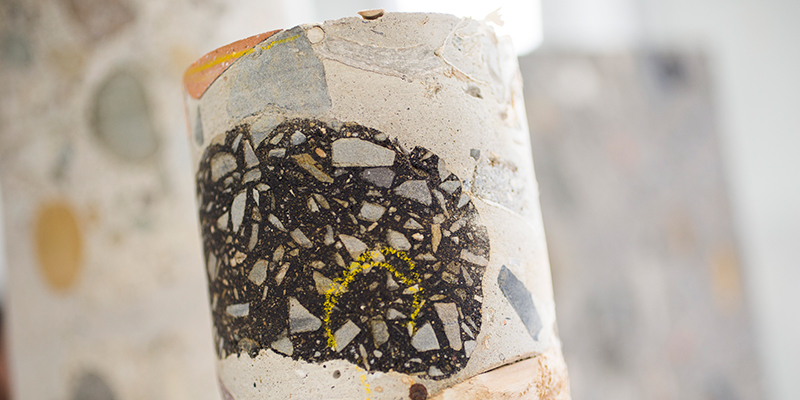
Looking for Solutions
− It must have been hard going, trying to deal with the situation from scratch…
Prof. Hisada: Fortunately for me, I expanded on my previous research work such as trying to find ways to mitigate the effects of acid rain on concrete, and the additional R&D support plus funds from the Consortium helped push the experimentation further. Not that my work was made easier… I had to work harder now to produce results. I am even today having problems dealing with difficult-to-handle flyash. We had a varied lot of waste, we obviously needed to sort and select carefully, trying to remove or neutralize as much as possible the salt from seawater.
As it was, materials experts from both academia and industry were familiar with the properties of different materials, and we soon found that if we place these under heat and pressure, they would become well-bonded enough despite comprising everything from ash to sludge. In this manner, a cement containing a variety of materials as glass and paper was born, usable as roadbed materials among other applications (it is also being used as base portion of the new tsunami defense wall, a photo of which is to be found herewith). To date we have recycled approximately 60% of the debris waste, just three years after the disaster.
− So nearly two-thirds of the debris is gone. Yet you must have taken much care in dealing with the waste materials.
Prof. Hisada: Yes, the post-quake debris this time contained some radioactive materials, so I also called upon JSCE experts to come up with guidelines such as monitoring methodology to separate out contaminated items. The decontamination efforts implemented have reduced the becquerel levels to the acceptable 8,000 ones per kg as well. It is our intermediate goal to achieve the consortium’s aim of recycling 80% of uncontaminated debris over the next five years.



